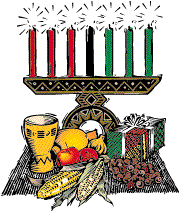Click on Photos to enlarge
|
|
Girls needed a dowry and had to marry before they were twenty-five years old |
She could not leave the house for three days before the wedding |
|
|
The bride and groom spent their honeymoon in her parents house.
|
guests went to the brides home for the banquet
|
|
|
If the young man wanted to marry the girl the two fathers negotiated the dowry. |
As a fiancee the young man could visit the girl whenever he wanted and take her out |
|
|
After four home visits the father asked the young man if he was serious about his daughter. |
they were always chaperoned. |
|
The people who could trace their noble ancestors called themselves Creole.Others were chacas or tradesmen, chacalatas or countryfolk (peasants), or chacumas for anyone with Black blood. All Creoles, no matter what level of society they were in, including slaves, looked down on the Americans.

Young men were given their own quarters for entertainment purposes. They had mistresses who were Black or mulatto, but they couldn�t marry them. Having a mistress was an accepted custom because marriages were usually business arrangements, not for love, and the men expected their wives to be passive and innocent lovers.
A gentlemen took fencing lessons, went horseback riding, dancing, or played cards. He would fight duels if necessary and preferred to die rather than be dishonored.
Girls needed a dowry and had to marry before they were twenty-five years old. They usually had a �coming out during an evening at the Theatre d�Orleans which marked the beginning of their search for a husband. The whole family attended the performance and sat in a box. Young men who were interested in the girl stopped by the box to pay their respects. They had intermediaries talk to the father so that they would be permitted to call on the girl at home.
The first formal visit was brief, with the girls mother and perhaps other relatives in attendance who would find out the young mans intentions. After four home visits the father asked the young man if he was serious about his daughter. If the young man wanted to marry the girl the two fathers negotiated the dowry. A notary came to write a list of the couples possessions and drew up the marriage contract. Once the contract was signed, the families announced the engagement.
|
The Creole Family Wedding
The girl's family gave a big dinner at her house where the young man gave her an engagement ring
|
The girls family gave a big dinner at her house where the young man gave her an engagement ring. As a fiancee the young man could visit the girl whenever he wanted and take her out, but they were always chaperoned.
A few days before the wedding, the young man gave his fiancee a wedding basket with lacework (handkerchiefs, mantilla, fan), a cashmere shawl, gloves, jewelry. She could not wear the jewelry before the wedding, nor could she leave the house for three days before the wedding.
The Creoles liked to have weddings on Mondays or Tuesdays in Saint Louie Cathedral in New Orleans in the late afternoon. The girls family gave a big dinner at her house where the young man gave her an engagement ring of orange blossoms. The bride carried the same flowers in her bouquet. Later she left the bouquet in the church, put it on a relatives grave, or sent it to the convent where she studied.
After the ceremony the members of the family signed the register. The guests then went to the brides home for the banquet. The bride cut the cake and gave pieces of it to single girls to put under their pillows. When the guests began to dance, the bride and her mother went to the bridal chamber where she took Off her wedding clothes and changed into her nightgown. The bride and groom spent their honeymoon in her parents�house. They were expected to stay in the bedroom for five days or more.
French Creoles in Louisiana: An American Tale
by
Harriet J. Bauman
Source
This info is a reprint and it's original Content has not been Changed , Modified or Altered from it's original concept and is not credited to this site


